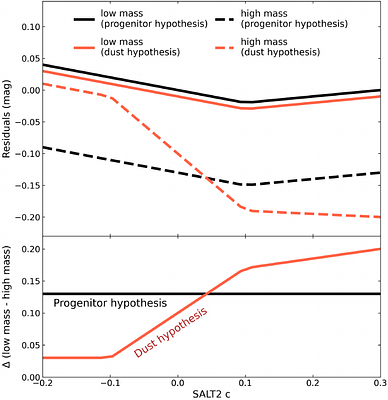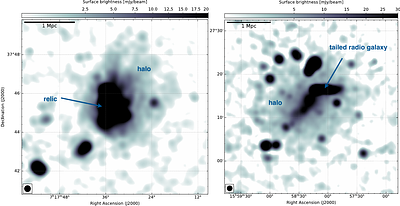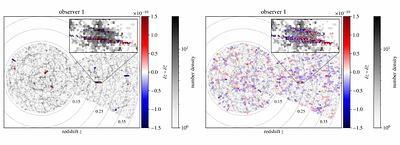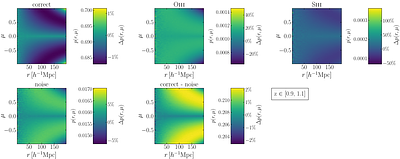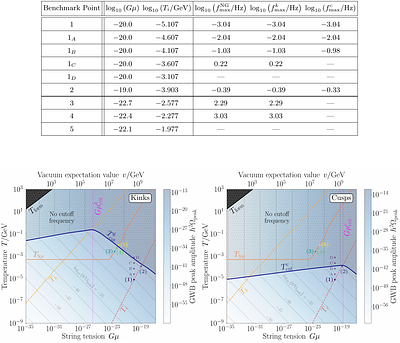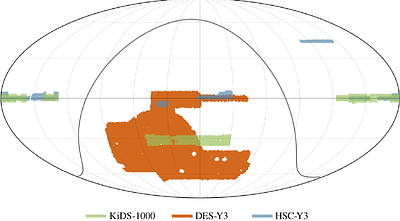By: Yukei S. Murakami, Daniel Scolnic
By: K. Rajpurohit, A. Botteon, E. O'Sullivan, W. Forman, M. Balboni, L. Bruno, R. J. van Weeren, M. Hoeft, G. Brunetti, C. Jones, A. S. Rajpurohit, S. P. Sikhosana
By: Alexander Oestreicher, Chris Clarkson, Julian Adamek, Sofie Marie Koksbang
By: Euclid Collaboration, I. Risso, A. Veropalumbo, E. Branchini, E. Maragliano, S. de la Torre, E. Sarpa, P. Monaco, B. R. Granett, S. Lee, G. E. Addison, S. Bruton, C. Carbone, G. Lavaux, K. Markovic, K. McCarthy, G. Parimbelli, F. Passalacqua, W. J. Percival, C. Scarlata, E. Sefusatti, Y. Wang, M. Bonici, F. Oppizzi, N. Aghanim, B. Altieri, A. Amara, S. Andreon, N. Auricchio, C. Baccigalupi, M. Baldi, A. Balestra, S. Bardelli, P. Battaglia, A. Biviano, A. Bonchi, D. Bonino, M. Brescia, J. Brinchmann, S. Camera, G. Cañas-Herrera, V. Capobianco, V. F. Cardone, J. Carretero, S. Casas, M. Castellano, G. Castignani, S. Cavuoti, K. C. Chambers, A. Cimatti, C. Colodro-Conde, G. Congedo, C. J. Conselice, L. Conversi, Y. Copin, F. Courbin, H. M. Courtois, M. Crocce, A. Da Silva, H. Degaudenzi, G. De Lucia, A. M. Di Giorgio, H. Dole, M. Douspis, F. Dubath, C. A. J. Duncan, X. Dupac, S. Dusini, S. Escoffier, M. Farina, R. Farinelli, F. Faustini, S. Ferriol, F. Finelli, S. Fotopoulou, N. Fourmanoit, M. Frailis, E. Franceschi, M. Fumana, S. Galeotta, K. George, W. Gillard, B. Gillis, C. Giocoli, J. Gracia-Carpio, A. Grazian, F. Grupp, L. Guzzo, S. V. H. Haugan, W. Holmes, F. Hormuth, A. Hornstrup, P. Hudelot, K. Jahnke, M. Jhabvala, B. Joachimi, E. Keihänen, S. Kermiche, A. Kiessling, M. Kilbinger, B. Kubik, M. Kümmel, M. Kunz, H. Kurki-Suonio, A. M. C. Le Brun, P. Liebing, S. Ligori, P. B. Lilje, V. Lindholm, I. Lloro, G. Mainetti, D. Maino, E. Maiorano, O. Mansutti, S. Marcin, O. Marggraf, M. Martinelli, N. Martinet, F. Marulli, R. Massey, S. Maurogordato, E. Medinaceli, S. Mei, M. Melchior, Y. Mellier, M. Meneghetti, E. Merlin, G. Meylan, A. Mora, M. Moresco, L. Moscardini, R. Nakajima, C. Neissner, S. -M. Niemi, J. W. Nightingale, C. Padilla, S. Paltani, F. Pasian, K. Pedersen, V. Pettorino, S. Pires, G. Polenta, M. Poncet, L. A. Popa, L. Pozzetti, F. Raison, R. Rebolo, A. Renzi, J. Rhodes, G. Riccio, E. Romelli, M. Roncarelli, E. Rossetti, R. Saglia, Z. Sakr, D. Sapone, B. Sartoris, J. A. Schewtschenko, P. Schneider, T. Schrabback, M. Scodeggio, A. Secroun, G. Seidel, M. Seiffert, S. Serrano, P. Simon, C. Sirignano, G. Sirri, L. Stanco, J. Steinwagner, C. Surace, P. Tallada-Crespí, D. Tavagnacco, A. N. Taylor, I. Tereno, N. Tessore, S. Toft, R. Toledo-Moreo, F. Torradeflot, I. Tutusaus, L. Valenziano, J. Valiviita, T. Vassallo, G. Verdoes Kleijn, D. Vibert, J. Weller, G. Zamorani, F. M. Zerbi, E. Zucca, V. Allevato, M. Ballardini, M. Bolzonella, E. Bozzo, C. Burigana, R. Cabanac, A. Cappi, D. Di Ferdinando, J. A. Escartin Vigo, L. Gabarra, W. G. Hartley, J. Martín-Fleitas, S. Matthew, N. Mauri, R. B. Metcalf, A. Pezzotta, M. Pöntinen, C. Porciani, V. Scottez, M. Sereno, M. Tenti, M. Viel, M. Wiesmann, Y. Akrami, S. Alvi, I. T. Andika, M. Archidiacono, F. Atrio-Barandela, S. Avila, A. Balaguera-Antolinez, C. Benoist, D. Bertacca, M. Bethermin, L. Blot, H. Böhringer, S. Borgani, M. L. Brown, A. Calabro, B. Camacho Quevedo, F. Caro, C. S. Carvalho, T. Castro, F. Cogato, A. R. Cooray, O. Cucciati, S. Davini, F. De Paolis, G. Desprez, A. Díaz-Sánchez, J. J. Diaz, S. Di Domizio, J. M. Diego, P. Dimauro, A. Enia, Y. Fang, A. G. Ferrari, A. Finoguenov, A. Fontana, A. Franco, K. Ganga, J. García-Bellido, T. Gasparetto, V. Gautard, E. Gaztanaga, F. Giacomini, F. Gianotti, G. Gozaliasl, M. Guidi, C. M. Gutierrez, A. Hall, S. Hemmati, C. Hernández-Monteagudo, H. Hildebrandt, J. Hjorth, S. Joudaki, J. J. E. Kajava, Y. Kang, V. Kansal, D. Karagiannis, K. Kiiveri, C. C. Kirkpatrick, S. Kruk, V. Le Brun, J. Le Graet, L. Legrand, M. Lembo, F. Lepori, G. Leroy, G. F. Lesci, L. Leuzzi, T. I. Liaudat, A. Loureiro, J. Macias-Perez, M. Magliocchetti, F. Mannucci, R. Maoli, C. J. A. P. Martins, L. Maurin, M. Miluzio, C. Moretti, G. Morgante, S. Nadathur, K. Naidoo, A. Navarro-Alsina, K. Paterson, L. Patrizii, A. Pisani, D. Potter, S. Quai, M. Radovich, P. -F. Rocci, S. Sacquegna, M. Sahlén, D. B. Sanders, A. Schneider, D. Sciotti, E. Sellentin, L. C. Smith, J. G. Sorce, K. Tanidis, C. Tao, G. Testera, R. Teyssier, S. Tosi, A. Troja, M. Tucci, C. Valieri, A. Venhola, D. Vergani, G. Verza, N. A. Walton
Cluster Lensing Mass Inversion (CLUMI+): Combining Dynamics and Weak Lensing around Galaxy Clusters
By: Keiichi Umetsu, Michele Pizzardo, Antonaldo Diaferio, Margaret J. Geller
By: Kai Schmitz, Tobias Schröder
By: Mohit Panwar, Akash Gandhi, Pankaj Jain
Reanalysis of Stage-III cosmic shear surveys: A comprehensive study of shear diagnostic tests
By: Jazmine Jefferson, Yuuki Omori, Chihway Chang, Shrihan Agarwal, Joe Zuntz, Marika Asgari, Marco Gatti, Benjamin Giblin, Claire-Alice Hébert, Mike Jarvis, Eske M. Pedersen, Judit Prat, Theo Schutt, Tianqing Zhang, the LSST Dark Energy Science Collaboration
By: Fuxing Qin, Yuting Wang, Gong-Bo Zhao
By: Juri Smirnov
